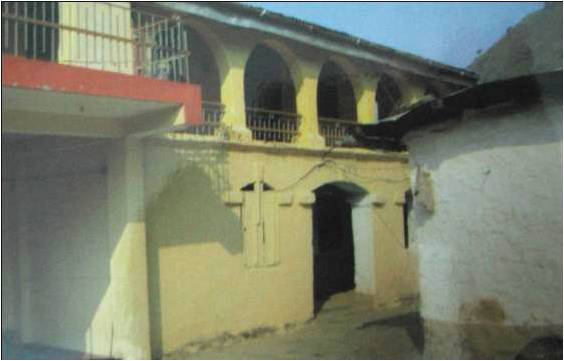
- Traditional House in Solan (Himachal Pradesh, India)
- [The south east side elevation]
- Traditional dwelling which have evolved over the ages have been influenced by these factors:
- Climatic response to the envioronment.
- Cultural pattern of the inhabitants.
- Adaptability of the house according to the social lifestyle.
- Locally available construction material.
LOCATION
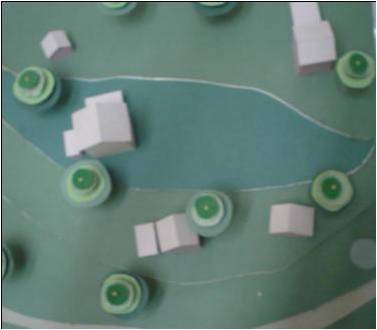
Site plan showing the scarcity of houses
- The house is located in village Basal, Solan in Himachal Pradesh.
- Built on a gentle hill slope which is sparsely populated, it has a small water channel running besides it.
- The dwelling was built in 1923 and occupied by a n agrarian family whose main preoccupation was to stores grains efficiently.
- Built around 80 years back, the house belongs to an agrarian family.
- Situated along a gentle slope,the density of houses is lessand lot of greenery.
- Hills give this house it scenic beauty.
- The house has been built taking into account the furious winters when it snows and the summers, which make the house really warm.
GEOGRAPHICAL CONDITION
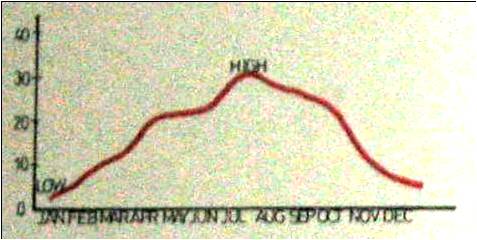
Diagram showing precipitation level in Solan
- Solan lies at an altitude of 1750 m above the sea level in middle himalayas.
- Although in cold and cloudy climate the place experiences a fair number of sunny days.
- It experiences a fairly long winter with a severe cold spell of about two months with short wet periods.
- The summers are pleasant with maximum temperature 29c.
LAYOUT PLAN
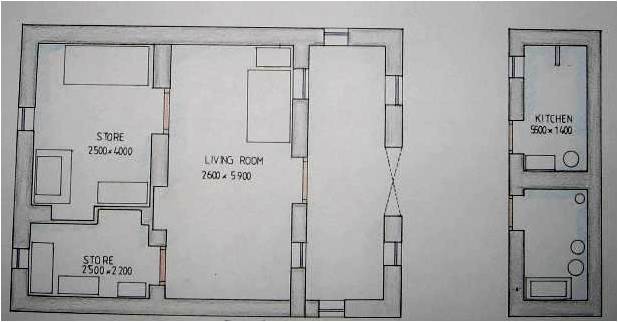
- The house has been built such that the cow-shed and kitchen form a separate unit, away from the living quarters.
- The living quarters basically include bedrooms and stores for storage of grains.
ELEVATIONS
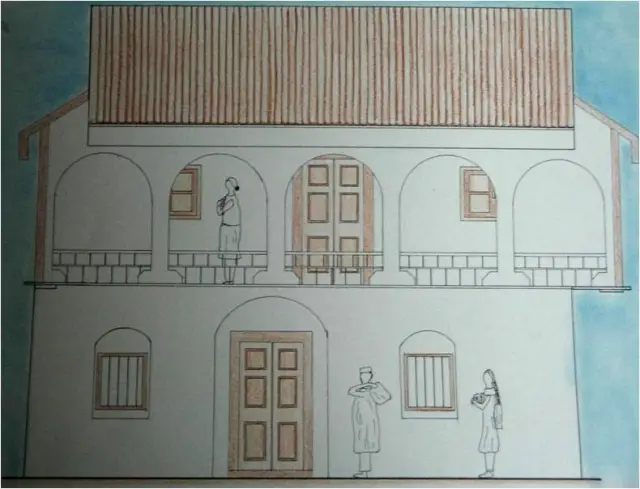
ELEVATION aa’
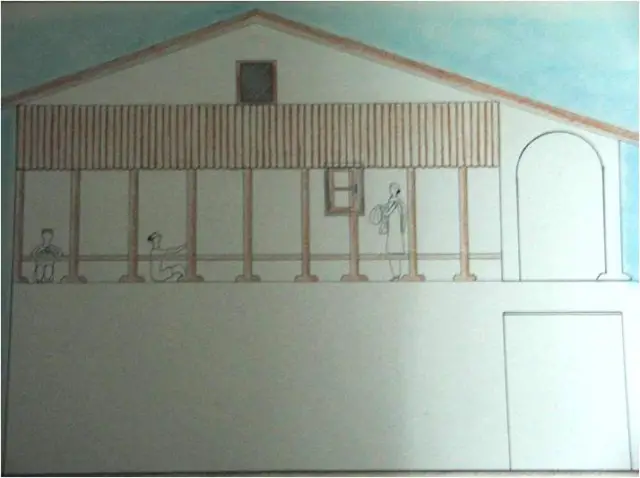
ELEVATION bb’
- The sloping roof as seen in the traditional dwelling is a common feature in all the houses in the area as is compact planning of the house.
SECTIONS
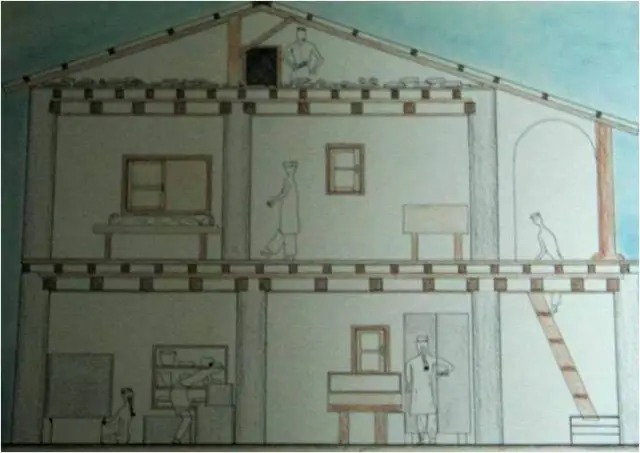
- The house which constitutes many stores has been built for storage of grains which formed the back bone of the agrarian family.
- Boxes of various sizes can been found.
THE ATTIC

- An interesting part of the house is the attic which is used to store corn which forms the staple diet of the people.
- The two windows on the sides ventilate and dry the corn at the same time protecting from the rain.
- Although the main function of the attic is to insulate the house, it serves as an excellent storage space.
BUILDING MATERIALS
- This is the kind of ladder used to go to the attic where the corn is stored.
- All the building construction material used is locally available like the stone and sand of which the walls are made, the timber is also readily available.
- The staircase used to reach the first floor of the house is made of timber, with stone slabs also introduced.
BUILT FORM
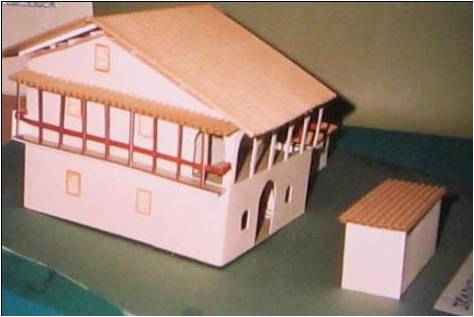
The house as seen from south side. (Paper Model)
- The built form of the house constitutes about 60% of the plot area.
- The house in its totality forms a compact unit.
- As a general rule the houses do not have a boundary wall.
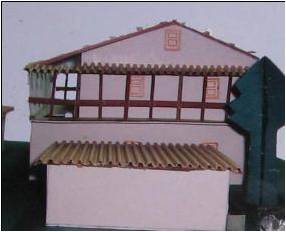
The cow shed and north side elevation of the house
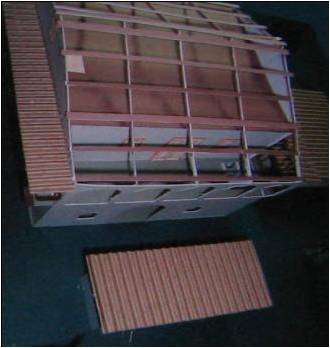
The timber truss which covers the first floor roof is effective in insulating the house as well.

ir is good and nice
ir is good and nice